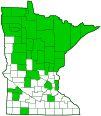forest tent caterpillar
(Malacosoma disstria)
Conservation • Description • Habitat • Ecology • Distribution • Taxonomy
|
|
||||||||||||||||||
Description |
|
Size |
Wingspan: 1″ to 1¾″ Total length: ⅝″ to 13 ⁄16″ |
Similar Species |
Habitat |
|
Ecology |
Season |
Late June and July |
Behavior |
Unlike other tent caterpillars, this insect does not spin tents. |
Life Cycle |
|
Larva Hosts |
In northern Minnesota they feed primarily on quaking aspen and paper birch trees. In central and southern Minnesota they feed primarily on American basswood and oak. Red maple is the only hardwood they will not feed on. |
Adult Food |
|
Distribution |
||
|
Sources 7, 21, 24, 27, 29, 30, 82, 83.
|
|
| 6/24/2024 | ||
Occurrence |
||
Common Outbreaks are localized. In Minnesota, widespread outbreaks of forest tent caterpillars have occured every 10–16 years. The last three outbreaks were in 1989, 2001, and 2012. The outbreaks last two to three years. They are followed by outbreaks of the friendly fly (Sarcophaga aldrichi), a natural parasite of the caterpillar. |
||
Taxonomy |
|
Order |
|
Superfamily |
Lasiocampoidea |
Family |
Lasiocampidae (lappet moths) |
Subfamily |
Lasiocampinae |
Tribe |
Lasiocampini |
Genus |
Malacosoma (tent caterpillar moths) |
Some sources (Catalog of Life and iNaturalist.org) place the genus Malacosoma in the subfamily Malacosominae. Other sources (BugGuide.net, ITIS, NCBI) place it in the subfamily Lasiocampinae. |
|
Subordinate Taxa |
|
|
|
Synonyms |
|
|
|
Common Names |
|
forest tent caterpillar (larva) forest tent caterpillar moth (adult) |
|
Visitor Photos |
||
Share your photo of this insect. |
||
This button not working for you? |
||
Alicia |
||
 |
||
| found on Hallaway Hill sign |
|
|
MinnesotaSeasons.com Photos |
||
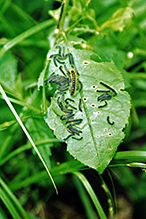 |
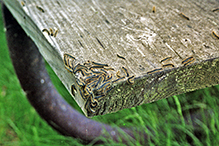 |
|
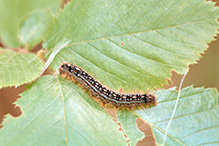 |
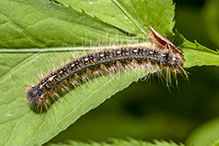 |
|
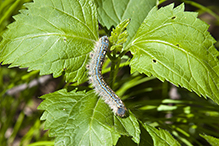 |
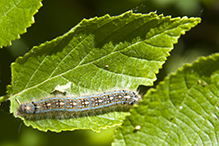 |
|
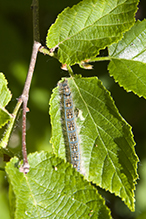 |

Slideshows |
Forest Tent Moth |
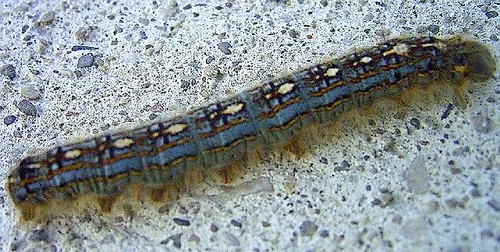
|
About
Copyright DianesDigitals |
Forest Tent Caterpillar Moth - Hodges#7698 (Malacosoma disstria) |
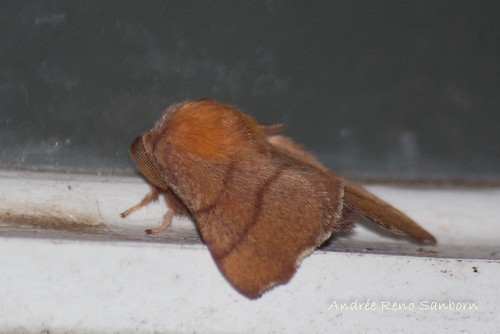
|
Malacosoma disstria (Forest Tent Caterpillar Moth) |
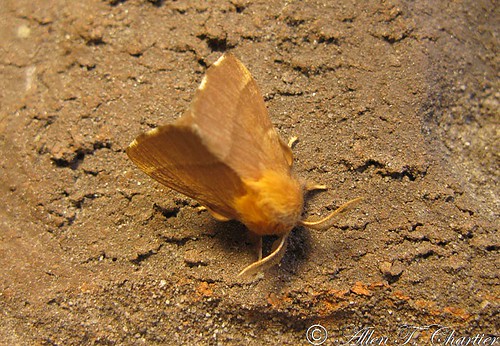
|

Visitor Videos |
||
Share your video of this insect. |
||
This button not working for you? |
||
|
Other Videos |
||
Forest Tent Caterpillar. Malacosoma Disstria. |
About
Uploaded on May 10, 2010 A spring trip to Addington Highlands, Ontario. May 8, 2010. The Forest Tent Caterpillar Moth (Malacosoma disstria) is the larva of a North American moth, found throughout the United States and Canada, and most common in the eastern regions. These tent caterpillars do not make tents, rather they weave a silky sheet where they lie together during molting. They lay down strands of silk as they move over branches and travel along them like tightrope walkers. However, it has been shown that a trail pheromone secreted from the ventral surface of the posterior tip of the abdomen rather than the silk guides and stimulates trail following. The caterpillar are social and travel and feed en masse. The caterpillars live in deciduous trees, which they strip of leaves after emerging from their eggs. The moths favor oak, sweetgum and tupelo, aspen trees, and sugar maple for oviposition but the larvae can be found feeding on many other species of woody trees or shrubs when they disperse from ovipositional trees during outbreaks. The females lay eggs in masses of up to 300, which are stuck to twigs and covered with a gluey cement called spumaline which prevents them from desiccating or freezing over the winter. The eggs hatch the following winter. Malacosoma disstria One outbreak in upstate New York and Vermont began in 2002, with 650,000 acres (2600 km²) defoliated in New York and 230,000 acres (930 km²) in Vermont in 2005. Forest tent caterpillars are just over 2 inches (5 cm) in length, black or dark brown or gray with blue and faint yellow longitudinal stripes. Each abdominal segment bears a white spot. The caterpillars have long setae, giving them a furry look. The adult moth that emerges after pupation is yellow or tan with a thick, short, furry body. The wingspan is about 1.5 inches (3 cm). It is rather strictly nocturnal, starting to fly soon after nightfall and by and by returning to rest in the latter half of the night (Fullard & Napoleone 2001). It is not known with certainty how far egg-laden female moths tend to fly. There is one credible report of moths flying hundreds of kilometres with the assistance of an unusually strong wind. (wikipedia) |
Forest Tent Caterpillars (Lasiocampidae: Malacosoma disstria) on Tree Trunk |
About
Uploaded on Jun 14, 2010 "If you're not a Buddhist you think there are Buddhists and nonBuddhists, but if you're a Buddhist you realize everybody's a Buddhist--even the bugs." --Shunryu Suzuki Photographed at Turtle River State Park, North Dakota (14 June 2010). |
Forest Tent Caterpillar (Lasiocampidae: Malacosoma disstria) |
About
Uploaded on Jul 6, 2010 Photographed at the Turtle River State Park, North Dakota (06 July 2010). |
Forest Tent Caterpillar (Lasiocampidae: Malacosma disstria) Phenotypic Variation |
About
Uploaded on Jun 12, 2010 An unusually blue specimen. Photographed at Turtle River State Park, North Dakota (11 June 2010). |
Forest Tent Caterpillar (Lasiocampidae: Malacosmoa disstria) Constructing Cocoon |
About
Uploaded on Jun 24, 2010 Photographed at Turtle River State Park, North Dakota (24 June 2010). |

Visitor Sightings |
||
Report a sighting of this insect. |
||
This button not working for you? |
||
| Reidun Atkinson 6/23/2024 |
Location: Middle Crooked Lake, Nevis, Mn is this a pest or not? Thx |
|
John Valo |
Forest tent caterpillars are a significant pest when they occur in large numbers. That happens periodically, and there is little that can be done to control them. During outbreaks, they cause widespread defoliation. That causes little damage to trees unless the trees are already stressed by drought or other factors, or the outbreak lasts for three years or more. |
|
| Alicia 6/15/2021 |
Location: Maplewood State Park found on Hallaway Hill sign |
| Matisse 5/28/2020 |
Location: Powderhorn Park, Minneapolis I found 2. I like them. |
|
MinnesotaSeasons.com Sightings |
||

Created: Last Updated: © MinnesotaSeasons.com. All rights reserved. |
